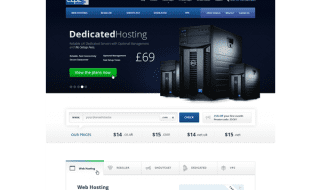
If you’ve started to make a name for yourself in the eCommerce world, then it might be time to scale your business. This essentially means preparing for growth and an increase in demand. You may even be considering opening up a brick-and-mortar store, in order to reach out to more customers. Scaling your business will bring you more opportunities but it’s not without risk. There will be inevitable challenges you’ll have to face along the way such as inventory management and fulfillment of an increased number of orders. Here are seven ways to successfully scale your eCommerce business.
Automation tools

Automation is key to growing your business. It will save you valuable time and money. You can automate many aspects of your eCommerce business. Here are some of the best marketing automation tools for example. These will enable you to assess big data in order to successfully reach out to more customers. It’s also essential to automate customer service. Integrate chatbots and FAQs on your website so that users have self-service options to find all the information they need. This way your customer support team will have more time to deal with more complex queries and issues.
Outsource your fulfillment
If your orders are going up, you’re probably going to need to rely on outsourcing many services. For eCommerce, it’s advisable to outsource fulfillment. This is the entire process involved in storing, packaging, and shipping your products. A fulfillment provider will have access to the necessary resources such as warehouse space and workforce. As you grow your business even further you could consider handling your own deliveries, but this will involve hiring a team of drivers which is a bigger investment.
Optimize your website for UX

Even if you’ve had plenty of traffic recently, it’s always essential to continually improve user experience (UX) on your website. Whether you’re using a platform or have created your own domain, you still need it to be accessible and engaging to customers. This means ensuring your site has a logical structure, fast page load speeds, and compatibility across all devices, especially mobiles. Today’s consumers are impatient and even if you’re offering the exact product they’re looking for, the standard of your website is what will seal the deal.
Consider a brick-and-mortar store
If you are considering opening a brick-and-mortar store this could bring you opportunities to reach out to a wider audience. There are several important factors to think about. The location of your store will have a direct effect on its success. For example, you may want to open in a well-populated place such as wisteria mall or a large shopping complex. Choose the location based on the needs of your target demographic. It’s also a good idea to speak to an independent financial advisor about all possible options and risks.
Inventory management software

As you increase your range and more orders come in, managing your inventory will be a lot more challenging. A good solution to this is inventory management software. This will help you organize your entire supply chain. Here is some of the best inventory management software in 2021. Many of these tools also include analytical features so you can reduce costs and improve efficiency. Alternatively, you could outsource inventory management.
Incentivize your customers
You still need to rely on a robust marketing strategy to keep the right customers coming to your site. You can boost engagement with offers and promotions for example. Incentivize existing customers with a referral scheme. Offer them a promo code or discount in exchange for recommending your business to a friend. You can do this using email marketing or on social media. The more marketing channels you take advantage of, the better. This will help you widen your reach and boost brand recognition even more.
Performance analytics

As you start to scale your business don’t neglect to constantly monitor your performance. Invest in the right tools to analyze big data relating to sales and marketing, and website performance. Get customer feedback and find out if any changes need to be made to your products or services. You can even research your competitors and find out what’s working for them. This will allow you to make any necessary improvements to all aspects of your business. Take a look at this eCommerce analytics 101 for more information. Keep on top of performance analytics as your business continues to grow. It will provide you with the insights you need and flag any new challenges along the way




